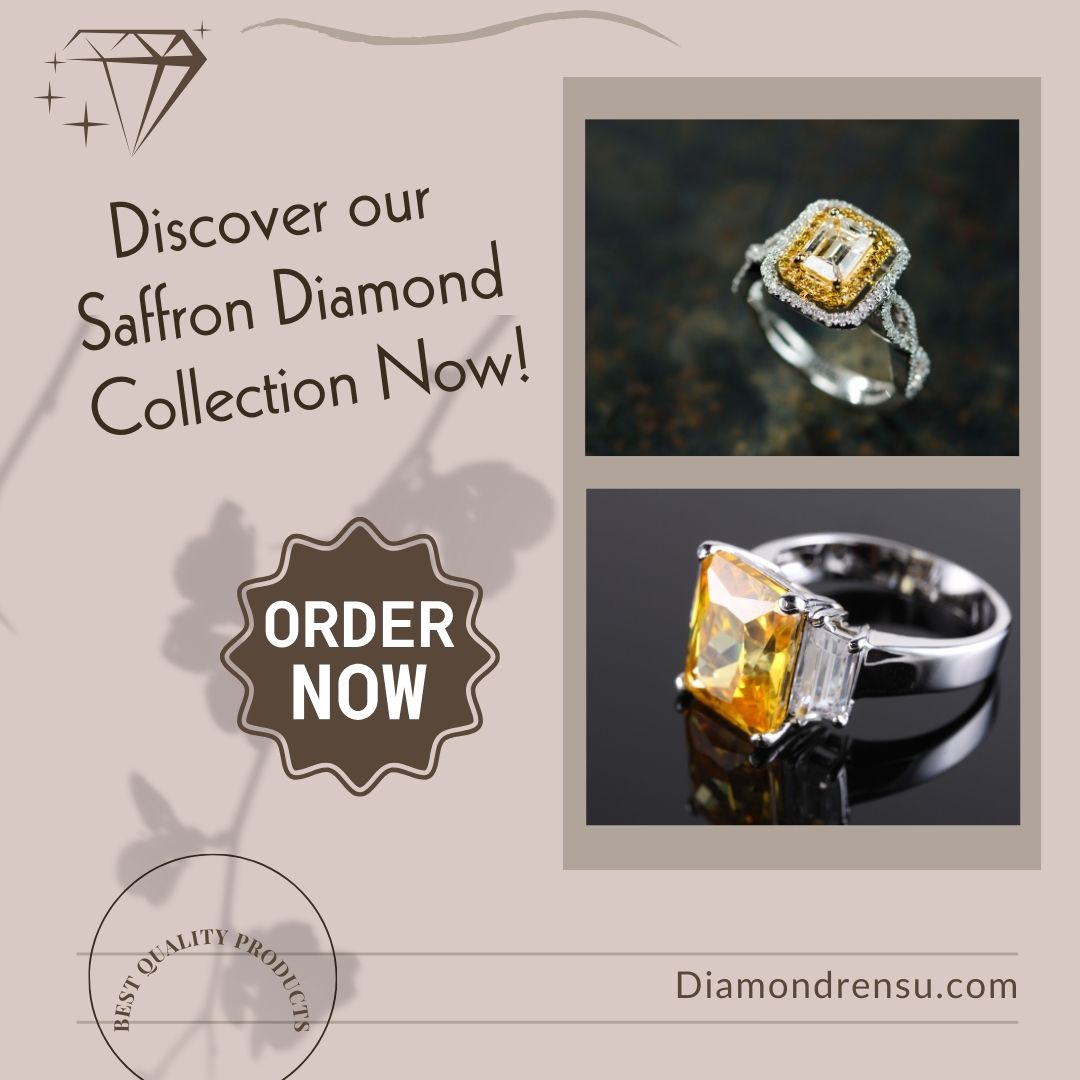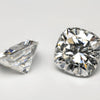
What is a Saffron Diamond: Unveiling the Rarity and Beauty
A saffron diamond does not refer to an actual gemstone, but rather is a term that might be used metaphorically or descriptively in various contexts. For instance, in the culinary world, saffron, known as the golden spice, is as valuable as diamonds in terms of its price by weight and its cultural worth. The rarity and the labor-intensive process of harvesting the threads from the Crocus sativus flower justify its value.
However, in some discourses, the term "saffron diamond" could be applied symbolically to denote value and rarity, similar to the high esteem both saffron and diamonds hold in their respective realms. For example, literature or articles discussing socioeconomic issues might use such a phrase to emphasize the importance or worth of a concept or asset in a figurative way. When encountering the phrase "saffron diamond," it's crucial to consider the context to infer the intended meaning, as it is not a standard term with a universally accepted definition.
Overview of Saffron Diamonds
Saffron diamonds are a unique and exotic variety of colored diamonds that exhibit shades ranging from vibrant orange to warm yellow hues. As you delve into the world of fancy colored diamonds, you'll find that these gems receive their striking color due to the presence of nitrogen molecules during their formation.
Characteristics of Saffron Diamonds:
- Color Spectrum: You'll come across a spectrum from pure orange to orange-yellow and yellow-orange. Their intense color is reminiscent of the spice saffron, from which they get their name.
- Rarity and Value: These diamonds are rare, making them a sought-after choice for jewelry. The more vivid the color, the higher the value tends to be.
- Grading: Like all fancy colored diamonds, saffron diamonds are graded based on their color intensity, which ranges from Faint to Fancy Deep.
Natural vs. Treated:
- Natural Saffron Diamonds: You will appreciate the beauty of natural saffron diamonds, which owe their color entirely to nature.
- Treated Diamonds: It's important to know that some diamonds undergo treatments to enhance or change their color; however, natural colors are more prized.
When considering a saffron diamond, it's essential to examine its certification to understand its color origin and grading. Renowned gemological institutions, like the GIA, provide detailed reports on these aspects.
Despite their name, saffron diamonds embody more than just an orange or yellow appearance; they represent a combination of artistry and geological marvel. Their warm glow is ideal for setting in jewelry that stands out. Whether you're interested in an investment or a statement piece, a saffron diamond could be a spectacular choice.
Origin and Sources
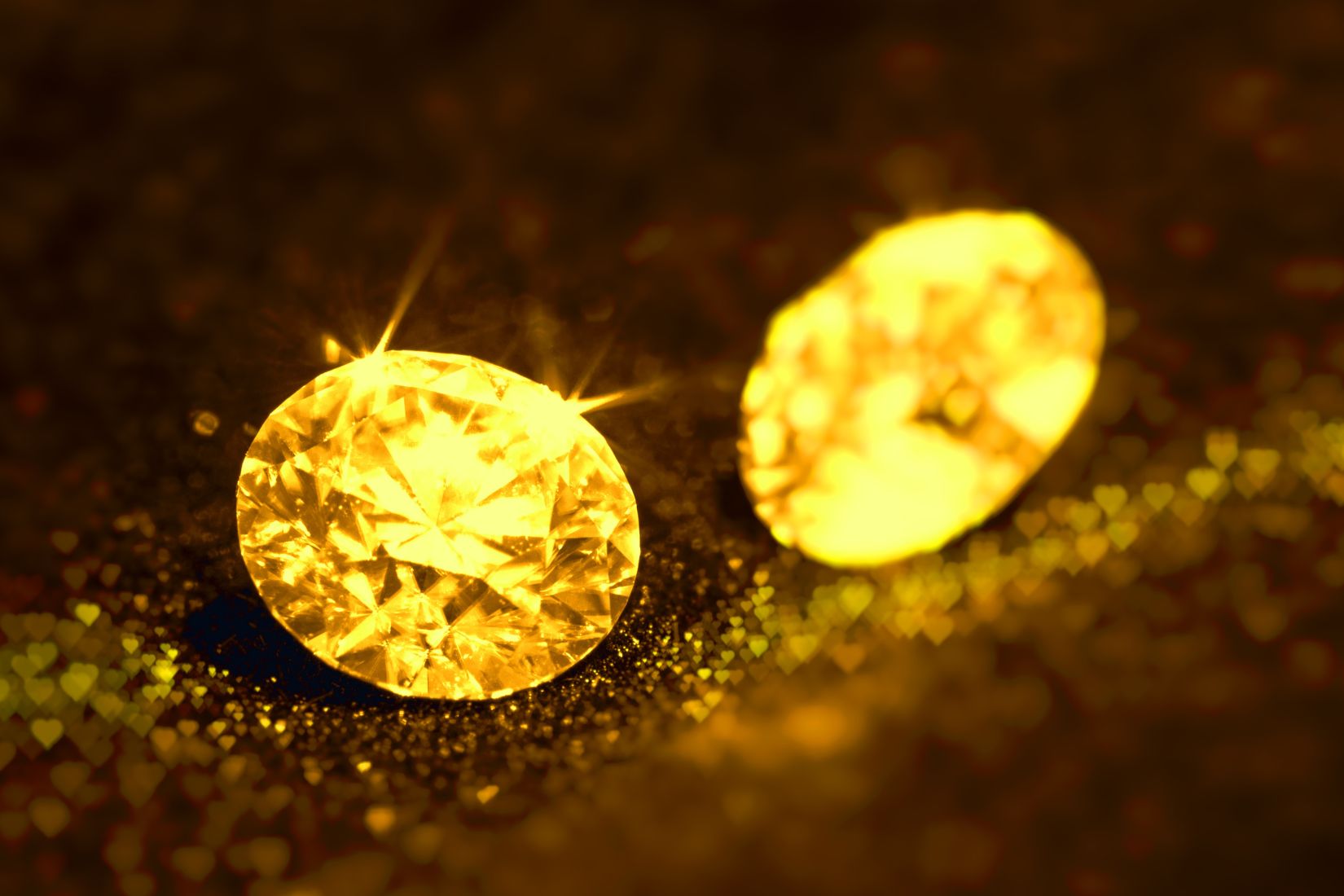
When exploring the tale of the elusive saffron diamond, you should be aware that it's a rare find, often shrouded in myth rather than fact.
Prominent Mines
The term "saffron diamond" is not a standard term in the diamond industry, and as such, there isn't a specific mine associated with it. However, when discussing prominent diamond mines, the Argyle Mine in Australia stands out. It's known for producing pink diamonds, which perhaps could be referred to as "saffron" due to their color. Although the mine ceased production in 2020, it was a leading source of colored diamonds for nearly four decades.
Geographical Distribution
The geographical distribution of diamond mines spans the globe, with South Africa being one of the most significant players with its rich diamond history. Diamond mines in South Africa have been a major part of the industry since the 19th century and continue to be a significant source of gem-quality diamonds. While 'saffron' diamonds are not a recognized category, the remarkable range of colored diamonds found here could rival the warming hues often associated with saffron.
Color and Classification

When you encounter the term saffron diamond, you are delving into a specific niche of colored diamonds. These treasures are sought after for their unique tones that resemble the spice after which they've been named. They fall under the broader classification of fancy colored diamonds, a category that brings a refreshing deviation from the classic white or colorless diamonds.
Color Grade
In the realm of diamonds, color grade is crucial to both the value and the appearance of a stone. Saffron diamonds are typically graded based on their color intensity, with descriptors such as fancy light, fancy intense, and fancy vivid. A fancy light saffron diamond will present a more subdued yellow hue, while a fancy intense or fancy vivid grade signifies a more deeply saturated orange-yellow color, much more reminiscent of the saffron spice itself.
Hue Variations
Your saffron diamond might exhibit a range of hue variations, from a soft yellow to a vibrant orange. The pure yellow or pure orange diamonds are rare and often more valuable, but the blended hues that define saffron diamonds have their own allure. The interplay between yellow and orange in these diamonds creates a warm, glowing aesthetic that is both sophisticated and distinctive within the sphere of fancy diamonds.
Physical and Chemical Properties
| Property | Description |
|---|---|
| Color | Vibrant orange to warm yellow hues, exhibiting saffron-like shades. |
| Hardness | Exceptional hardness, scoring 10 on the Mohs scale. |
| Chemical Composition | Carbon atoms arranged in a crystal lattice structure. |
| Formation | Forms deep within the Earth's mantle under high pressure and temperature conditions. |
| Cut and Shape | Can be cut into various shapes, allowing for creative and unique designs. |
| Clarity | Clarity may vary; some saffron diamonds may contain inclusions that contribute to their uniqueness. |
| Origin | Found in diamond mines globally; specific mines may yield saffron diamonds with distinct characteristics. |
Understanding the physical and chemical properties of a saffron diamond is essential to appreciate its value and uniqueness. The presence of nitrogen impurities and the crystal structure play pivotal roles in the gem's characteristics.
Nitrogen Impurities
Your saffron diamond's coloration largely results from nitrogen atoms interspersed within the crystal lattice. Nitrogen atoms can arrange in groups or remain isolated, affecting the diamond's clarity and hue. For instance, Type Ia diamonds contain nitrogen pairs or clusters, while Type Ib diamonds, which are rarer, have scattered single nitrogen atoms. The arrangement and amount of nitrogen present determine the intensity of the yellow color in your diamond.
Crystal Structure
The crystal structure of a saffron diamond adheres to the face-centered cubic diamond lattice, which is known for its extreme hardness and capacity to disperse light. Flawless atomic alignment is paramount to achieve the gem’s signature brilliance. However, when nitrogen atoms integrate into the diamond’s structure, they can disrupt the uniformity, influencing both clarity and color perception. Notably, the precise placement of these impurities can enhance the diamond's radiance or detract from its clarity, making each stone's arrangement of flaws and color uniquely its own.
Pricing and Rarity
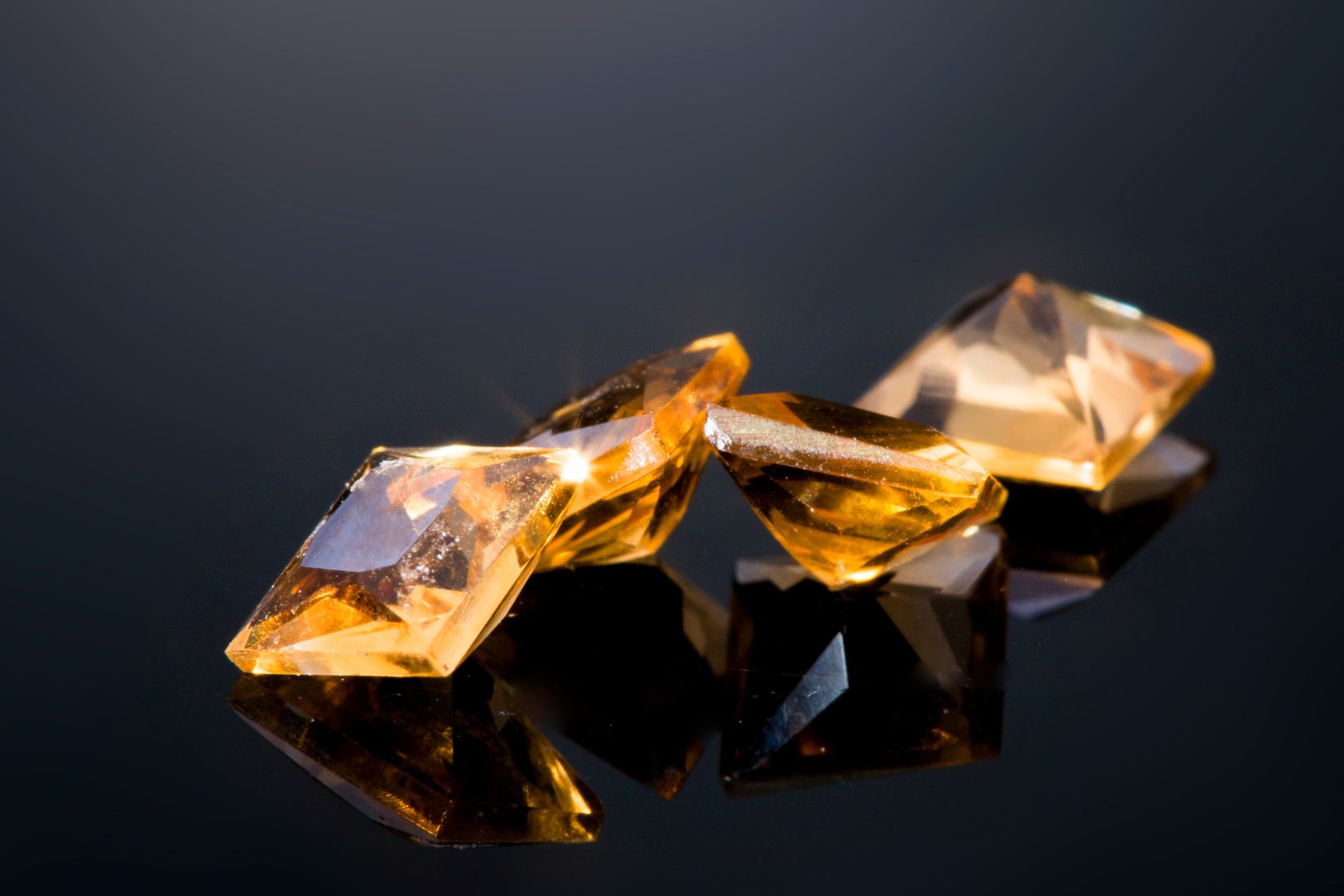
In the intricate world of gemstones, your understanding of a saffron diamond's market value and scarcity factors is essential. This section will guide you through the unique aspects that contribute to their pricing and rare status in the market.
Market Value
The market value of a saffron diamond reflects its rare position within the gemstone hierarchy. A saffron diamond is not a variety you'll frequently encounter. Such rarity is reflected in the price, which can be exorbitant due to high demand and limited supply. For instance, like how diamonds achieve the highest prices if the crystals have no particles enclosed, the value of a saffron diamond similarly skyrockets for those pieces showcasing impeccable clarity and vivid coloration.
Scarcity Factors
Scarcity is a defining characteristic of the rarest diamonds. Factors such as remarkable hue, which is akin to the vibrant color of saffron spice, make these diamonds exceptionally scarce. While spices like saffron are not rare in and of themselves, a saffron diamond's scarcity is a result of the complex conditions required for its formation; it's these conditions that contribute to its rarity and, consequently, its hefty price tag.
Saffron Diamond Jewelry
When you explore saffron diamond jewelry, you're looking at pieces that often blend traditional elegance with a taste of exotic color. These distinctive diamonds carry a warm yellow hue reminiscent of the spice saffron, giving them a unique place in the world of gemstones.
Popular Designs
Engagement Rings: Saffron diamonds are a popular choice for those seeking a twist on the classic engagement ring. They are frequently featured at the center of a ring, accented by smaller, clear diamonds that intensify the saffron diamond's warm glow.
Earrings and Pendants: Besides rings, you'll find saffron diamonds elegantly incorporated into various earring designs and pendants. Their vibrant color can stand alone or be complemented by other gemstones to enhance their exotic appeal.
Settings
Classic Settings: For a timeless look, saffron diamonds are often set in traditional prong settings that allow the maximum amount of light to enter the stone, enhancing its sparkle and color.
Custom Settings: If you prefer a personalized touch, opting for a custom setting can ensure that your saffron diamond is presented exactly to your taste. This could mean a bespoke design that embraces modernity or pays homage to vintage aesthetics.
In terms of investment, saffron diamond ring prices can vary broadly based on the cut and setting quality. Loose diamonds can also be purchased, allowing you to create a one-of-a-kind piece of diamond jewelry. Whether you seek an opulent engagement ring or a subtle custom setting, these diamonds offer a blend of classic charm and eye-catching color.
Quality Assessment

When considering a saffron diamond, it’s crucial to understand its quality assessment parameters, which include its certification and the grades for clarity and cut. Only with a thorough evaluation can you determine the true value and authenticity of one of these luxurious gemstones.
Certification
Your saffron diamond should come with a certification from a reputable grading entity such as the Gemological Institute of America (GIA) or the American Gem Society (AGS). This certification ensures that the diamond has undergone a rigorous assessment and its quality is documented. For certified fancy colored diamonds, each report details the stone’s characteristics and any enhancements it may have undergone to arrive at its color.
Clarity and Cut Grades
Clarity grade is pivotal. It refers to the absence of inclusions and blemishes. With clarity grades ranging from Flawless (FL) to Included (I), a higher clarity grade indicates a cleaner stone with fewer visible imperfections. Saffron diamonds with a high clarity grade are more prized and valuable.
A saffron diamond’s cut grade signifies how well the stone’s facets interact with light. A high cut grade means the diamond will have a radiant brilliance and fire. Diamonds with an excellent or ideal cut, assessed by standards set by the GIA or AGS, will display intense sparkle and light performance, making the most of the saffron diamond’s unique hue.
Comparative Analysis
| Aspect | Saffron Diamonds | Other Diamonds |
|---|---|---|
| Color | Vibrant orange to warm yellow hues, exhibiting saffron-like shades. | Varies widely, including colorless, near-colorless, and fancy color diamonds. |
| Hardness | Exceptional hardness, scoring 10 on the Mohs scale. | Also exceptionally hard, scoring 10 on the Mohs scale. |
| Chemical Composition | Carbon atoms arranged in a crystal lattice structure. | Carbon atoms arranged in a crystal lattice structure. |
| Formation | Forms deep within the Earth's mantle under high pressure and temperature conditions. | Forms deep within the Earth's mantle under similar conditions. |
| Cut and Shape | Can be cut into various shapes, allowing for creative and unique designs. | Can be cut into various shapes, offering versatility in jewelry designs. |
| Clarity | Clarity may vary; some saffron diamonds may contain inclusions that contribute to their uniqueness. | Clarity may vary; diamonds can be found with varying degrees of inclusions. |
| Origin | Found in diamond mines globally; specific mines may yield saffron diamonds with distinct characteristics. | Found in diamond mines worldwide, each mine contributing to the diamond's unique characteristics. |
In exploring the realm of rare diamonds, your familiarity with saffron diamonds places you at the forefront of understanding how these gems compare to other esteemed varieties. Let's dissect the distinct features and origins that set them apart.
Comparison to Other Fancy Colors
Fancy colored diamonds are prized for their unique hues, with colors ranging from deep blues to vivacious yellows. Each color category, such as pink, red, and blue diamonds, arises from specific impurities and structural anomalies during formation. Red diamonds are some of the rarest and often command top market values due to their scarcity and intense coloration.
Yellow diamonds, and especially the vibrant canary yellow diamonds, are perhaps the closest relatives to natural saffron diamonds in their appearance. The intensity of the yellow hue in canary diamonds is due to the presence of nitrogen molecules, whereas the warm, golden tone of saffron diamonds can be likened to a blend of yellow with a hint of orange zest. However, natural saffron diamonds have a distinct color profile that sets them apart from the more commonly known yellow diamonds.
Natural Versus Treated Diamonds
| Aspect | Natural Diamonds | Treated Diamonds |
|---|---|---|
| Origin | Formed naturally deep within the Earth's mantle over millions of years. | Undergo treatments to enhance color, clarity, or other characteristics. |
| Color | Exhibits a wide range of colors naturally, including colorless and fancy colors. | May undergo treatments like irradiation or HPHT to enhance or change color. |
| Clarity | Varies in clarity, with inclusions formed during natural processes. | Treatments like laser drilling or fracture filling may improve clarity. |
| Cut and Shape | Available in various cuts and shapes, preserving natural crystal structures. | Cut and shaped based on desired outcomes, considering treatment requirements. |
| Value | Valued for rarity, natural beauty, and unique characteristics. | May have a lower market value compared to untreated diamonds. |
| Certification | Certified by gemological laboratories to confirm natural origin and characteristics. | Certified with disclosure of treatments applied, ensuring transparency. |
When it comes to authenticity, the difference between natural saffron diamonds and color-treated diamonds is significant. A genuine saffron diamond's color is inherently present from its creation beneath the earth's surface, resulting from the environment and elements that influenced its growth. Natural diamonds of this hue are exceptionally rare and sought after, making them a prestigious choice for collectors and connoisseurs.
Conversely, color-treated diamonds are those that have undergone artificial enhancement processes to alter or amplify their color. These treatments can range from high-pressure, high-temperature (HPHT) treatments to irradiation coupled with annealing, transforming less desirable diamonds into colorful gems. Determining the natural origin of the color in saffron diamonds requires expert analysis, as the sophistication of treatment techniques can make differentiation challenging for the untrained eye.
By delving into the nuances of saffron diamonds and their counterparts, your appreciation for these natural wonders will deepen, allowing you to discern their intrinsic beauty and worth.
Investment and Collectability
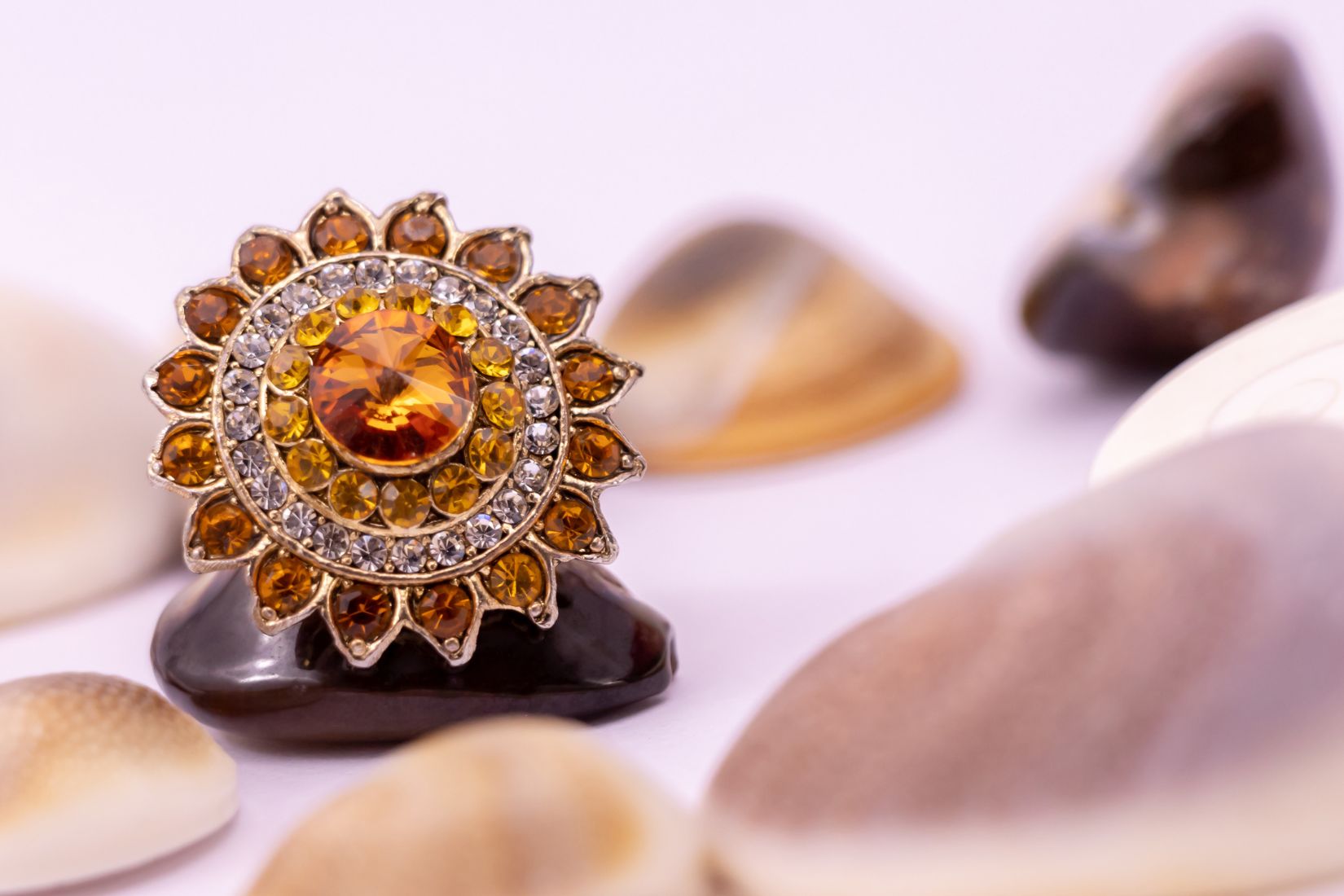
When you consider saffron diamonds as a potential investment, it is crucial to understand their standing in the market, which is reflected in auction records and investor interest. These stones represent a niche in high-end jewelry, prized for their rarity and beauty.
Auction Records
Saffron diamonds have a distinctive color that makes them standout choices at auctions. Auctioned pieces with a saffron hue often attract attention from collectors and investors alike, looking to add a unique piece to their collections. Recently, a saffron diamond ring set a new record, underscoring the potential for these diamonds to yield high returns.
Investor Interest
Your interest as an investor in saffron diamonds might stem from their exclusivity in the market. These diamonds are not only sought after for their bold color but also for the collectability factor that can drive their value up. As you delve into high-end jewelry as an alternative asset, remember that collectibles like saffron diamonds can diversify your investment portfolio.
Symbolism and Cultural Significance

When you encounter the term saffron diamond, it is essential to understand the layers of meaning it carries. Saffron, known as an expensive spice, offers a unique blend of energy, optimism, and wisdom to various cultures across the world. Chiefly harvested from the crocus flower, it's not only cherished as a culinary addition but as a symbol of devotion and beginnings.
Delving into the cultural layers, in some traditions, saffron's golden hue is a sign of wealth and opulence, which ties well with the concept of a diamond—often seen as the pinnacle of valuable gemstones. The saffron spice itself carries substantial weight in symbolism, often representing purity and sanctity.
Your understanding of the saffron diamond is enriched when reflecting on its use. In religious and spiritual contexts, the vibrant color of saffron can signify divinity and the quest for enlightenment. Other times, it's a marker of celebration or honor, used in festivals or important ceremonies.
You should note that while it isn't a physical gemstone, the metaphorical saffron diamond aligns with these sentiments, embodying not only physical but also substantial cultural wealth. In a similar spirit to the versatile spice, the term embraces multitudes — from luxury and rarity to depth and historical significance.
Frequently Asked Questions
In this section, you'll find specific information addressing common inquiries about saffron diamonds, which are known for their unique hue and luxurious appeal within the jewelry market.
How does the price of a saffron diamond engagement ring compare to other diamond rings?
The price of a saffron diamond engagement ring often exceeds that of standard white diamond rings due to their distinct coloring and rarity. The hue is a significant factor that can place them in a higher price bracket.
What factors contribute to the high value of the most expensive saffron diamonds?
The most expensive saffron diamonds boast a vivid saturation and consistency in color, which is coupled with their cut, clarity, and carat weight. These factors together contribute to their high value.
What rarity level do saffron diamonds hold in comparison to other diamonds?
Saffron diamonds are exceptionally rare, especially those with a pure and intense yellow color. They occur far less frequently in nature compared to white diamonds.
How is the price per carat determined for saffron diamonds?
The price per carat for saffron diamonds is determined by the intensity of the yellow hue, clarity, cut, and whether the color is natural or enhanced, with natural intense colors fetching higher prices.
Where can one find saffron diamond rings for sale?
Saffron diamond rings can be found at high-end jewelry retailers and at specialized stores that focus on colored diamonds. Online platforms and auctions are also common places to acquire such unique rings.
What distinguishes a saffron diamond's hue and its appeal in the jewelry market?
A saffron diamond's hue ranges from a light yellow to a deep orange-yellow, known as canary yellow. This distinct coloring, often linked to warmth and vitality, adds to its appeal and desirability in the jewelry market.
Checkout some of our top collections:
